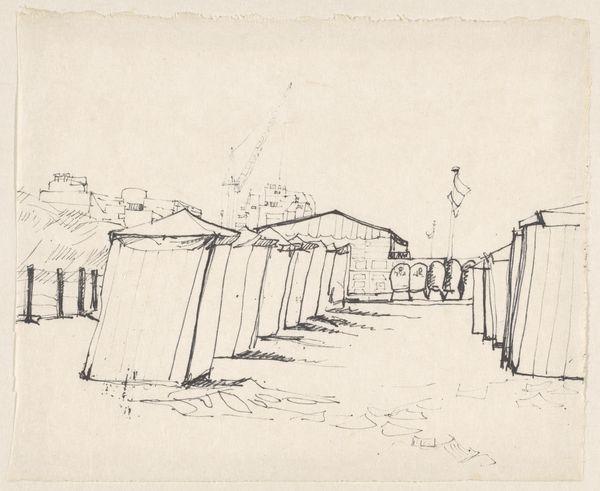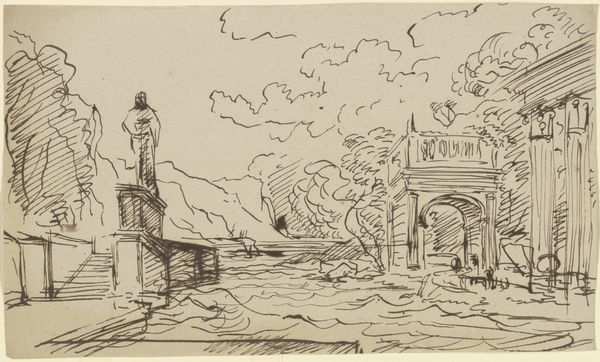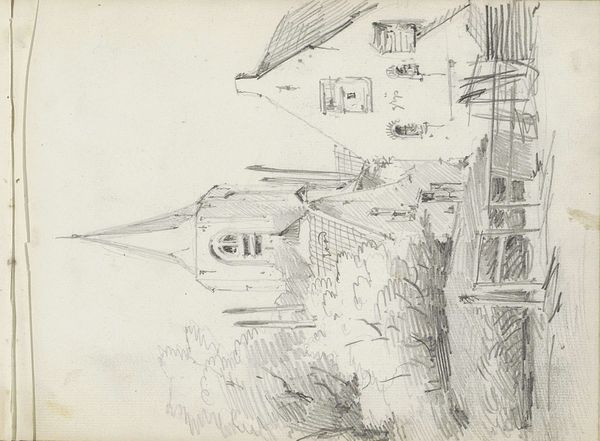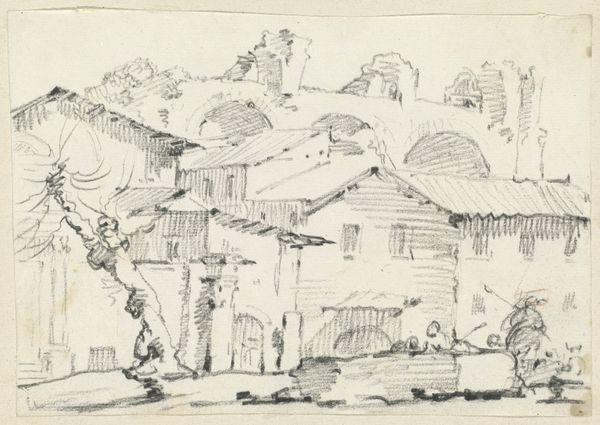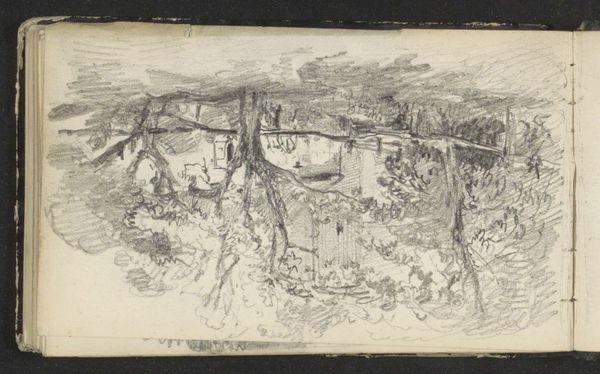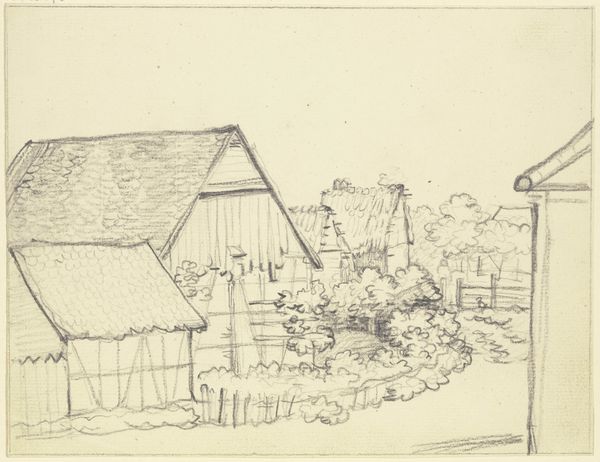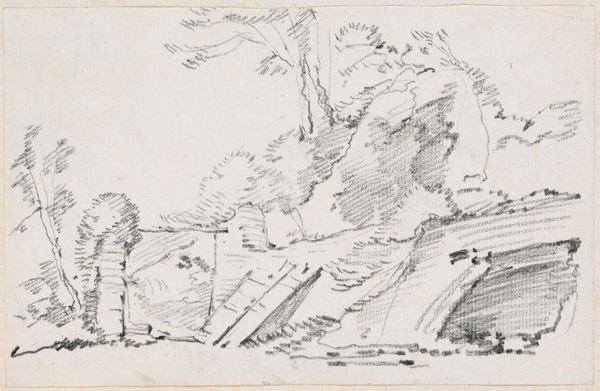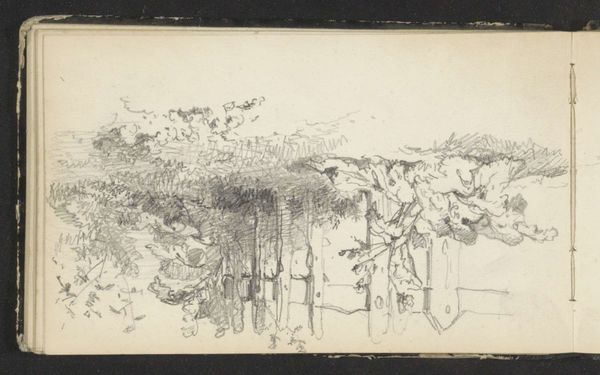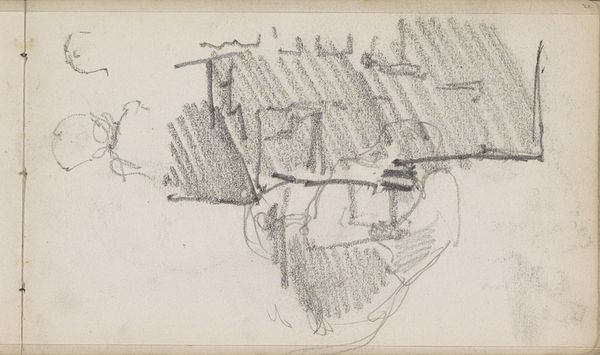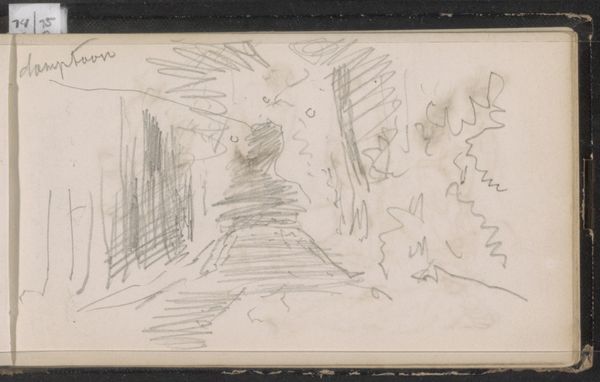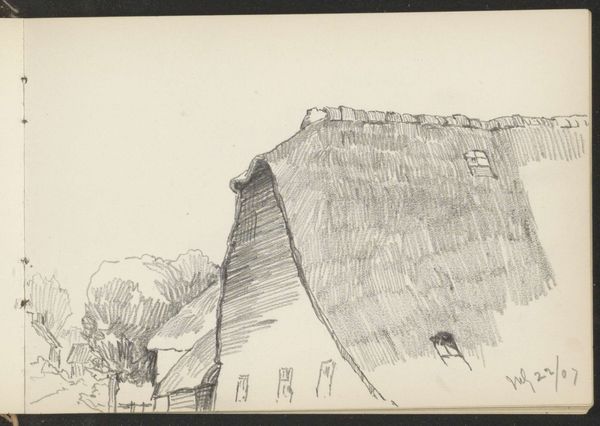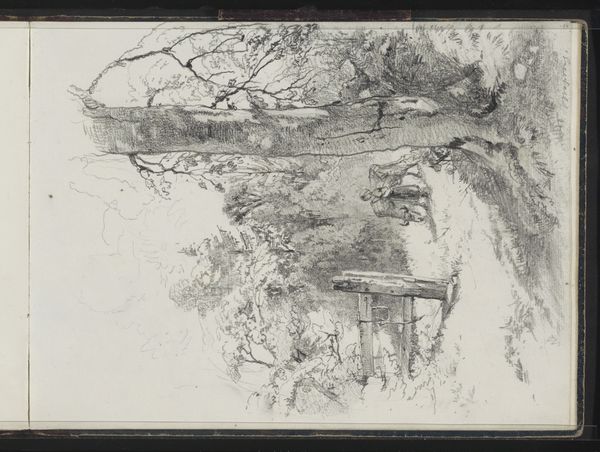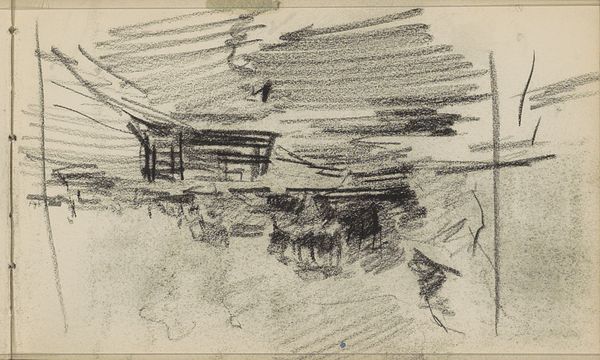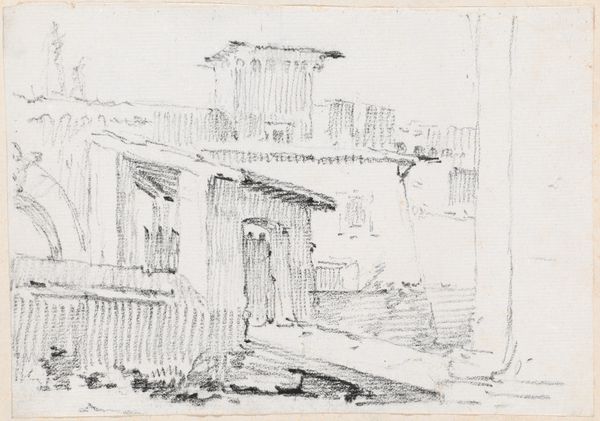
Illustration til "Halvhundrede Fabler for Børn" af Hey 1834
0:00
0:00
drawing, print, ink, engraving
#
drawing
# print
#
landscape
#
ink
#
line
#
genre-painting
#
engraving
Dimensions: 106 mm (height) x 134 mm (width) (bladmaal)
Editor: This is an illustration for "Halvhundrede Fabler for Børn" by Hey, created in 1834 by Martinus Rørbye, using drawing, print, ink, and engraving. The strong lines make it feel very detailed, and I’m intrigued by the animals. How do you interpret this work from a formal perspective? Curator: Note the carefully constructed composition. The convergence of lines from the rooftop draws the eye to the central structure, creating a dynamic sense of perspective. The use of line, a significant element here, varies in thickness to define form and texture, lending depth to the otherwise two-dimensional plane. Consider, for instance, the distinction between the rigid lines detailing the architecture versus the softer lines depicting foliage. Do you observe the structural contrasts at play? Editor: Yes, I see how the precise lines of the building create a contrast with the looser lines used for the tree and the sky. It almost divides the image into defined vs undefined. Why the emphasis on contrasting these textures and patterns? Curator: The composition’s strength lies in the interplay between contrasting forms. Notice the relationship between the hard geometry of the rooftop and the organic shapes of the foliage, creating visual interest. Furthermore, the contrast of the positioning of the various fauna add to the intriguing quality of the image. Editor: It’s fascinating how focusing on the lines and shapes reveals such depth in a simple illustration. Curator: Indeed. The formal elements—line, form, composition—are not merely descriptive but constitutive of meaning in this piece. We might see in the piece an underlying commentary on contrasting realms. Editor: I see now that even without historical context, there's much to gather simply by looking at how the artist chose to compose the image. Thanks. Curator: Precisely. Our discussion allows us to appreciate how a keen understanding of the art's formal elements, its inherent structure and language, is key to understanding art and opening up a discourse about its potential meaning.
Comments
No comments
Be the first to comment and join the conversation on the ultimate creative platform.
